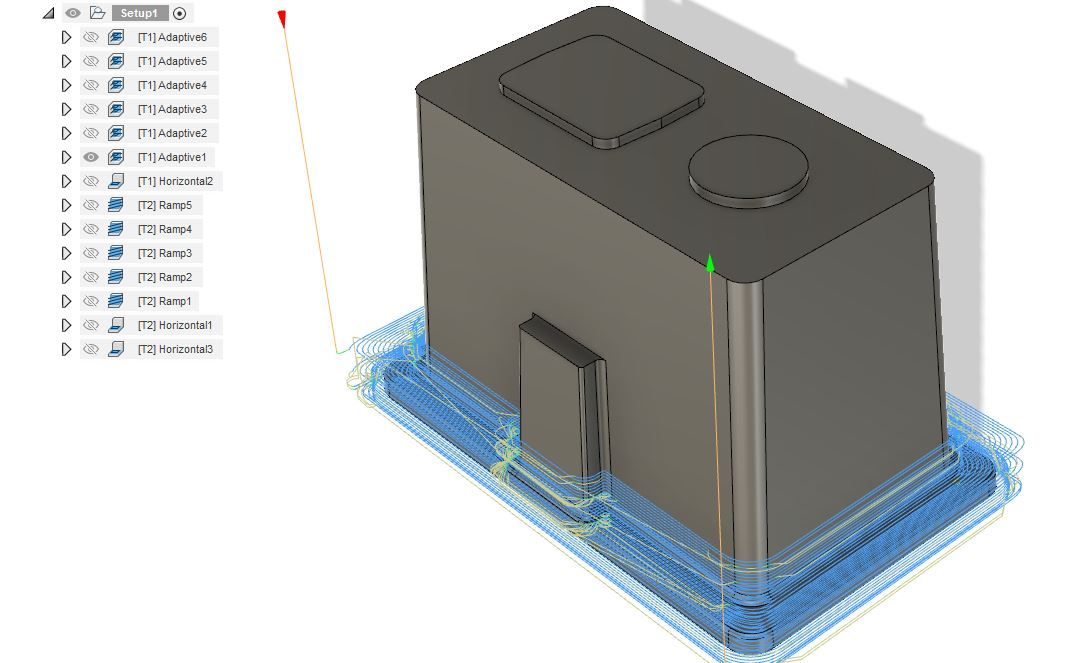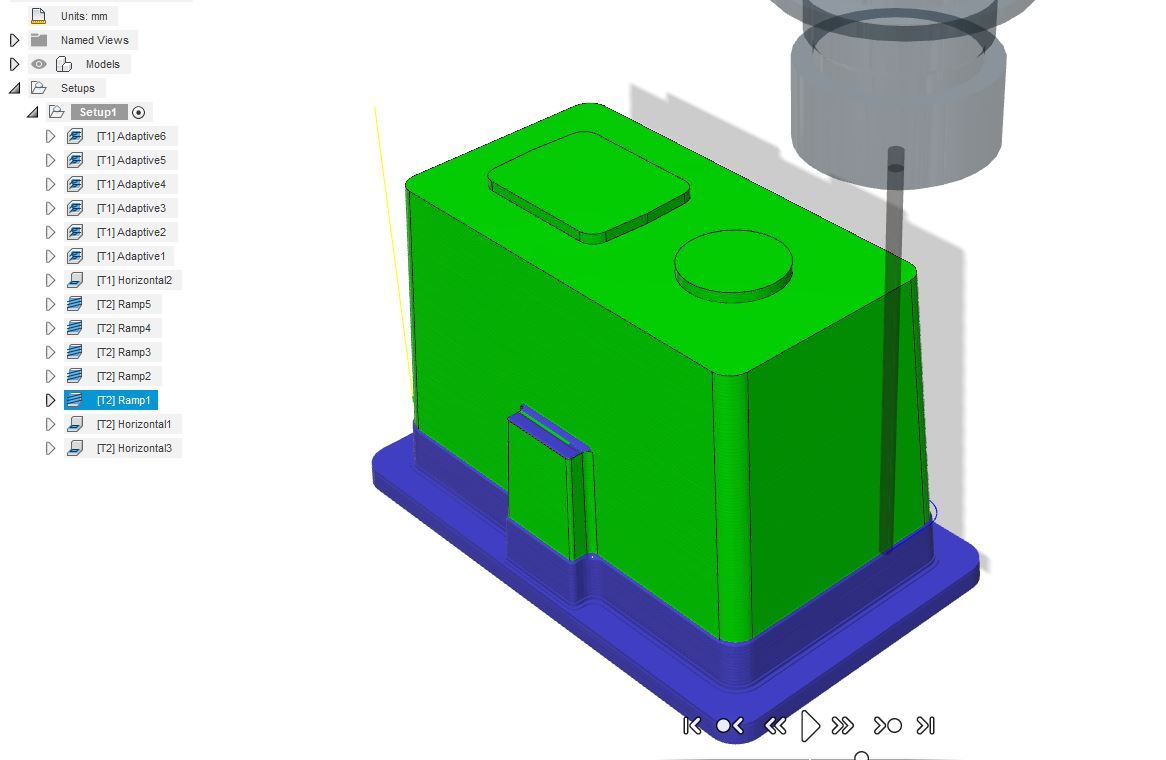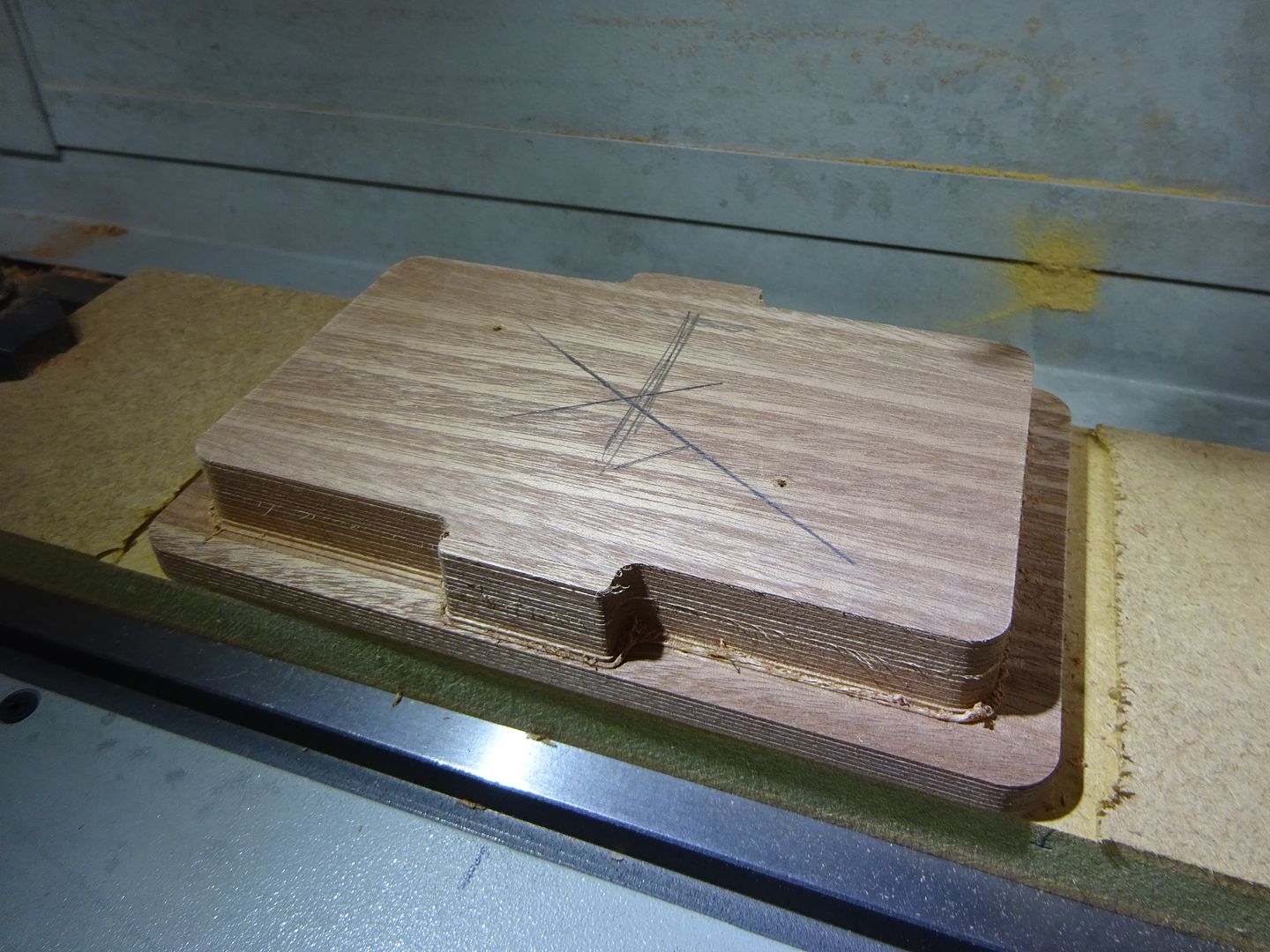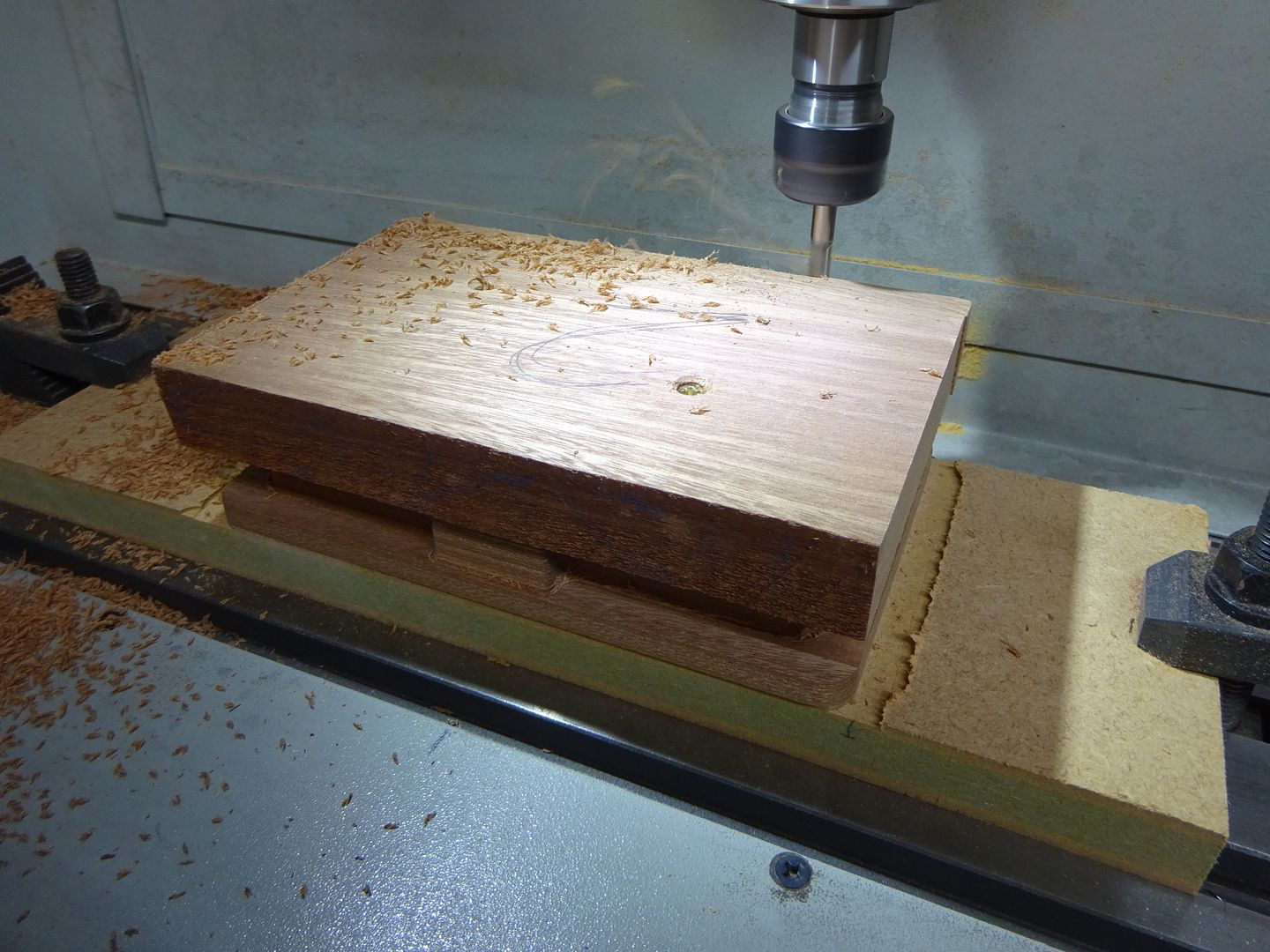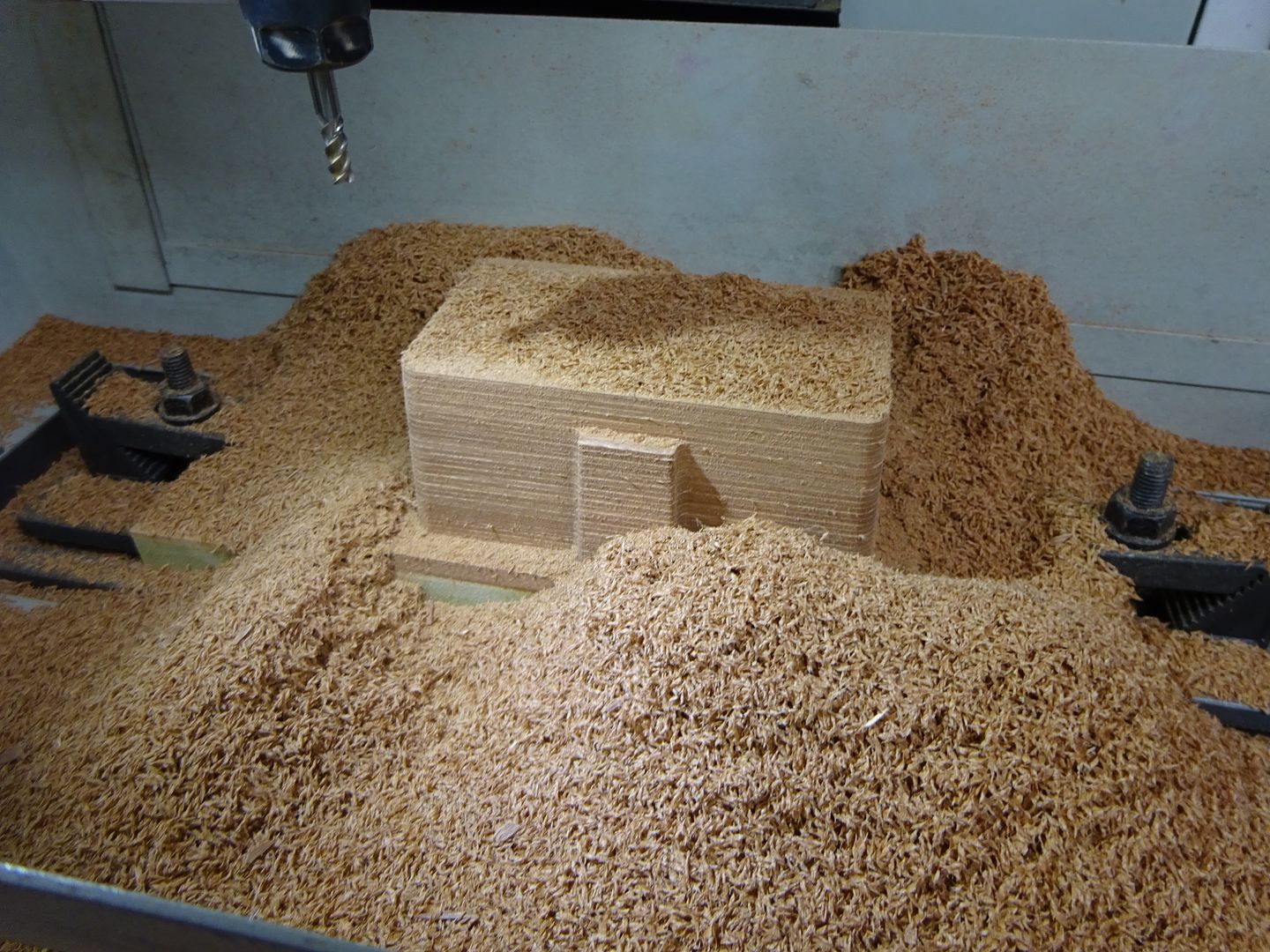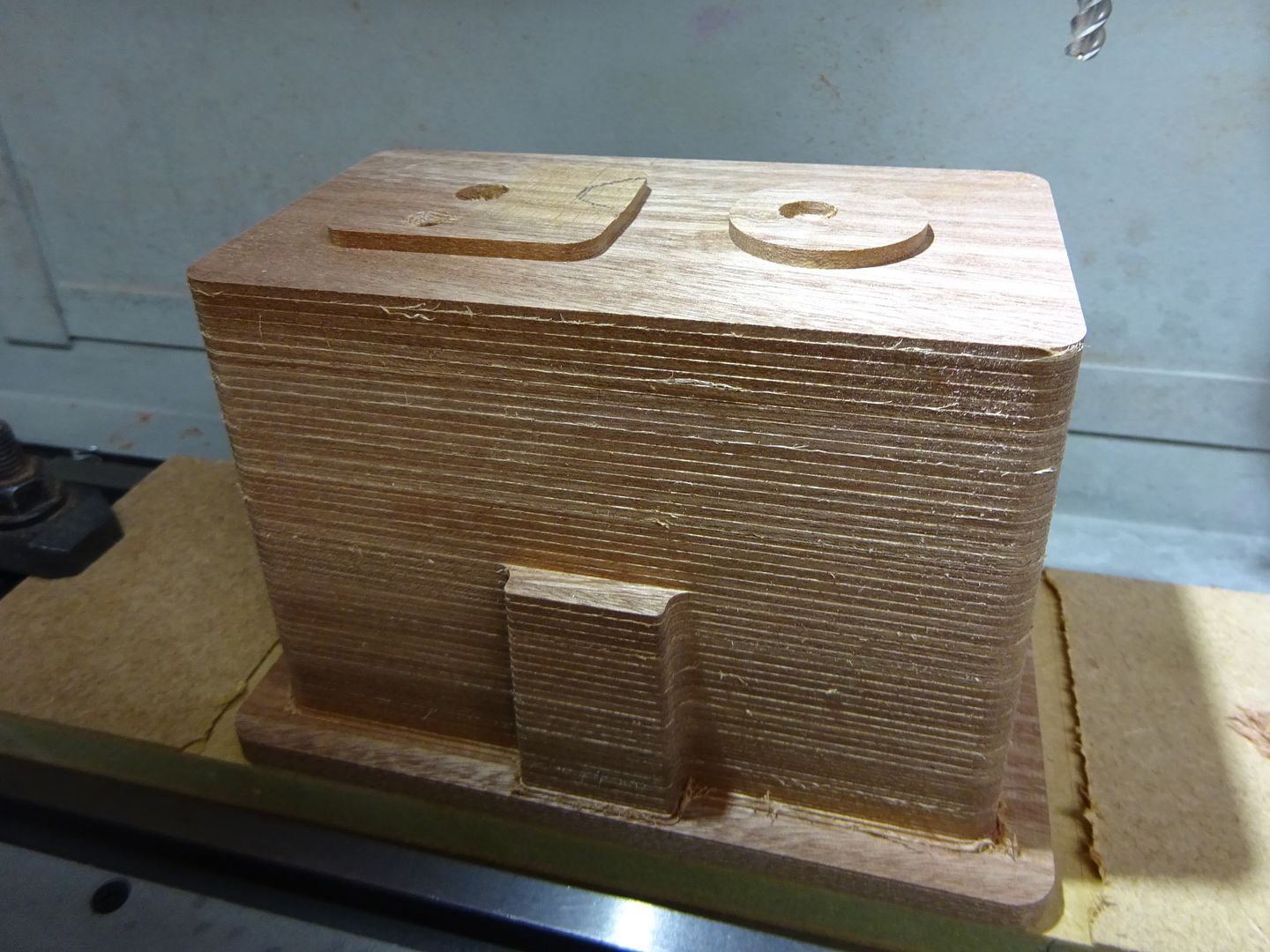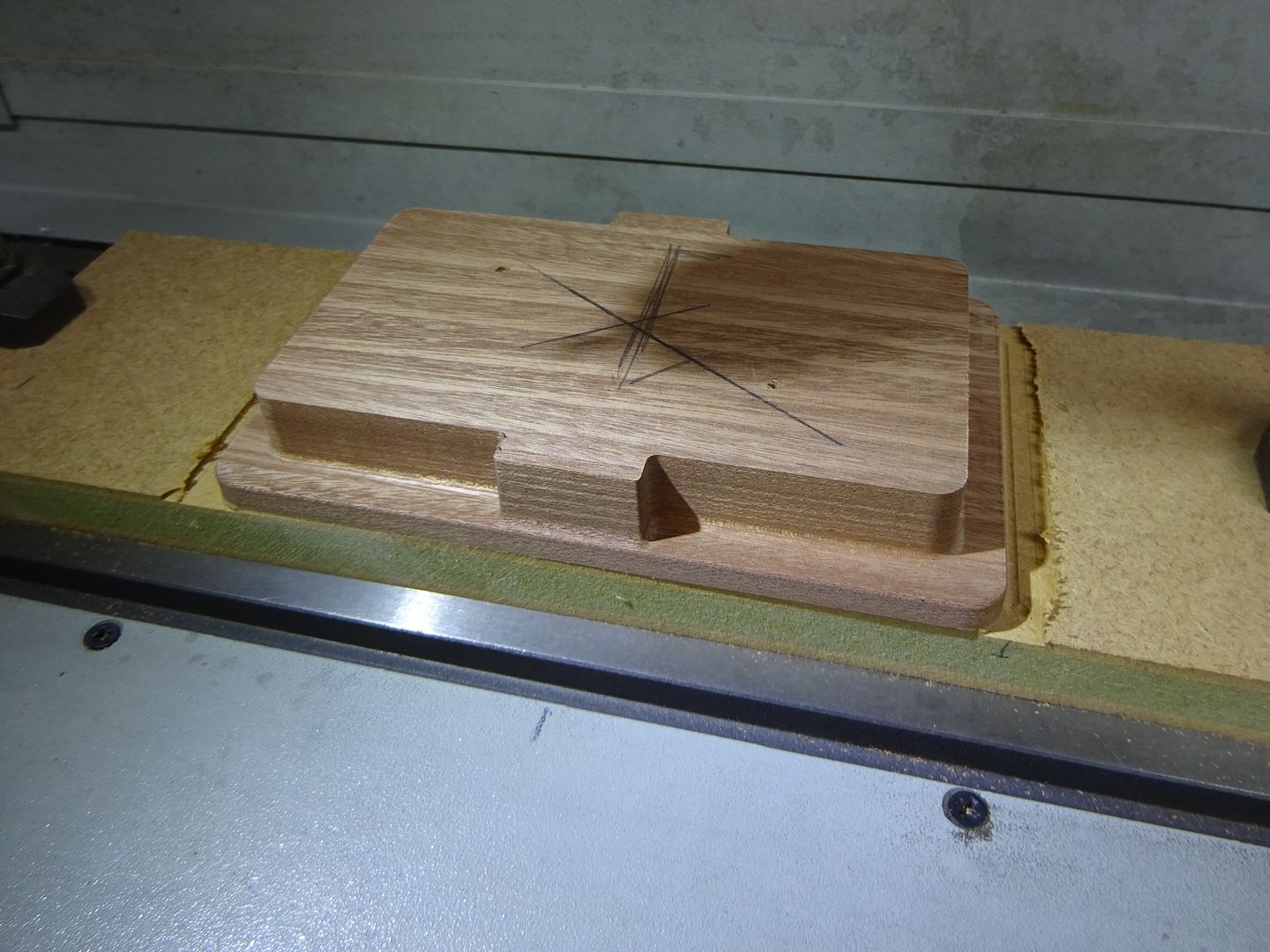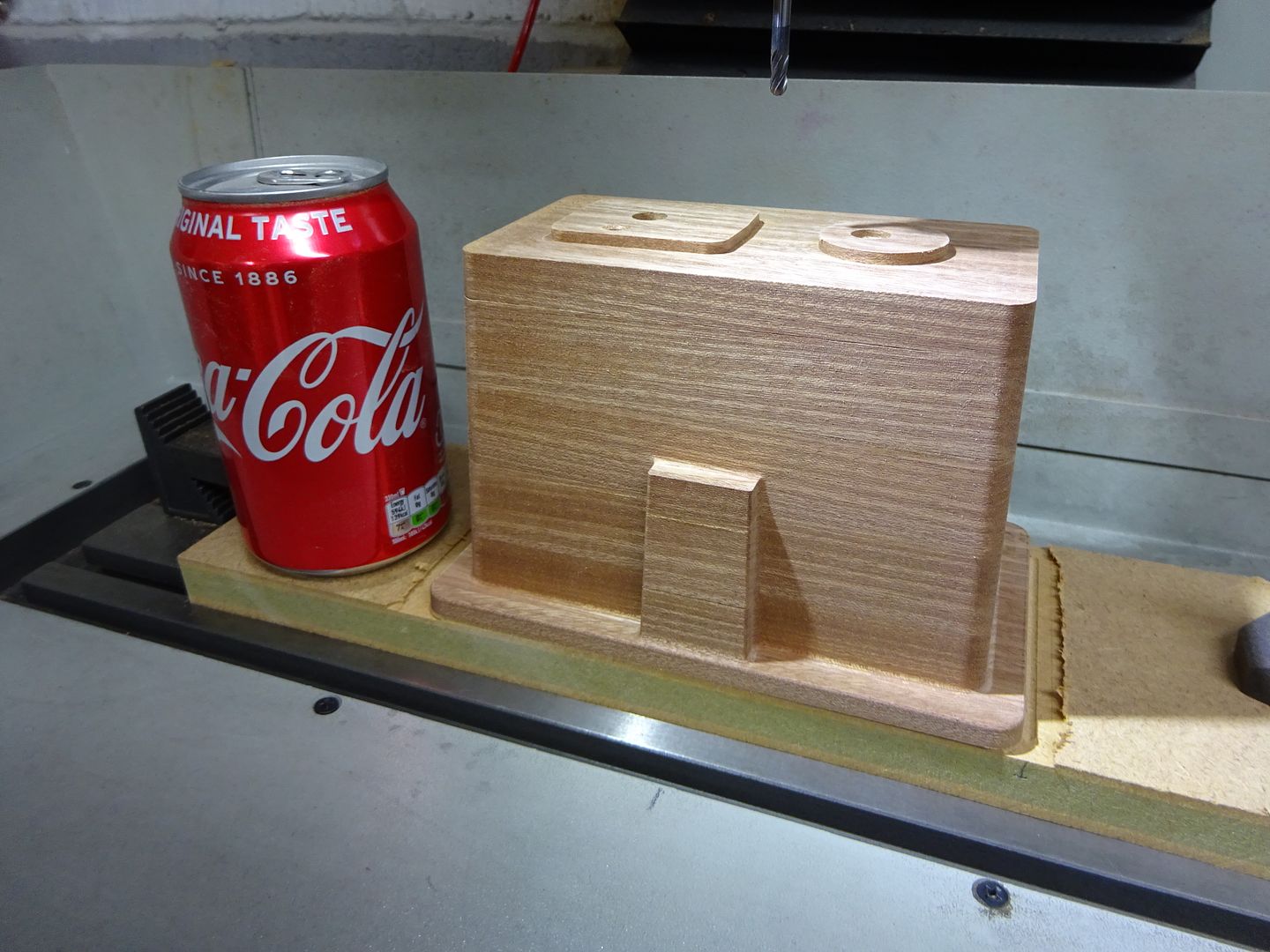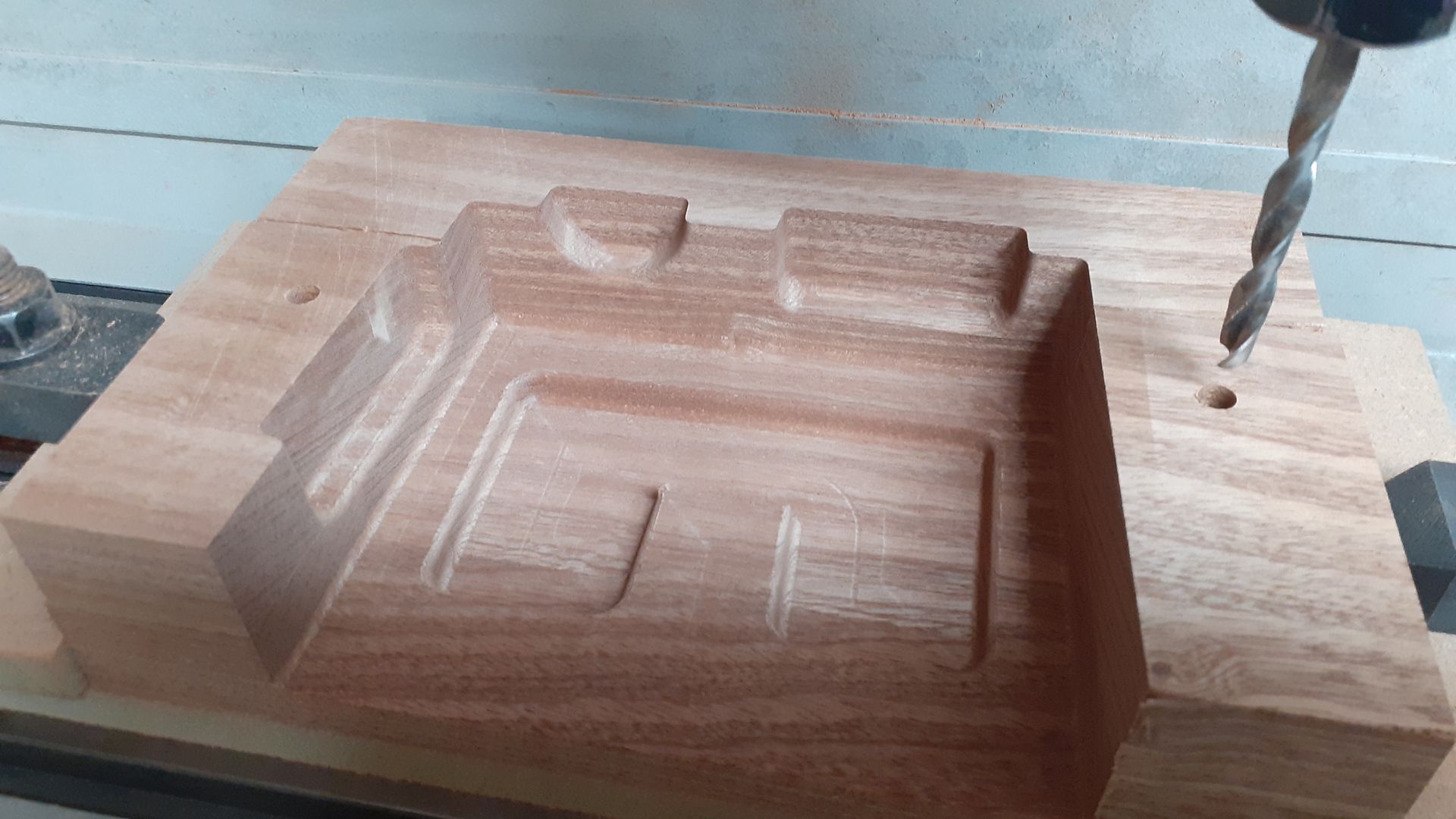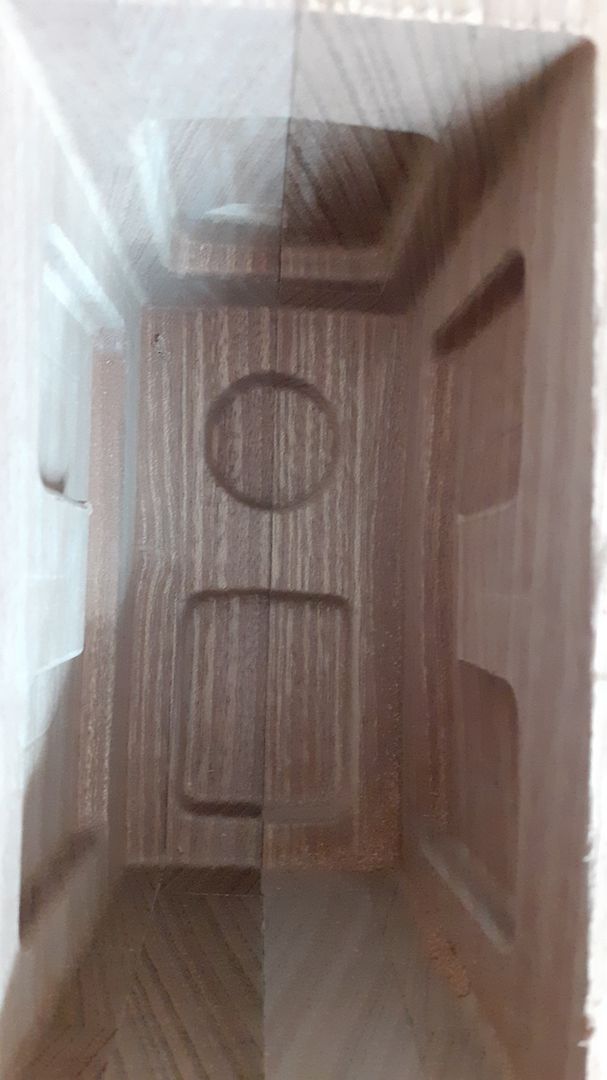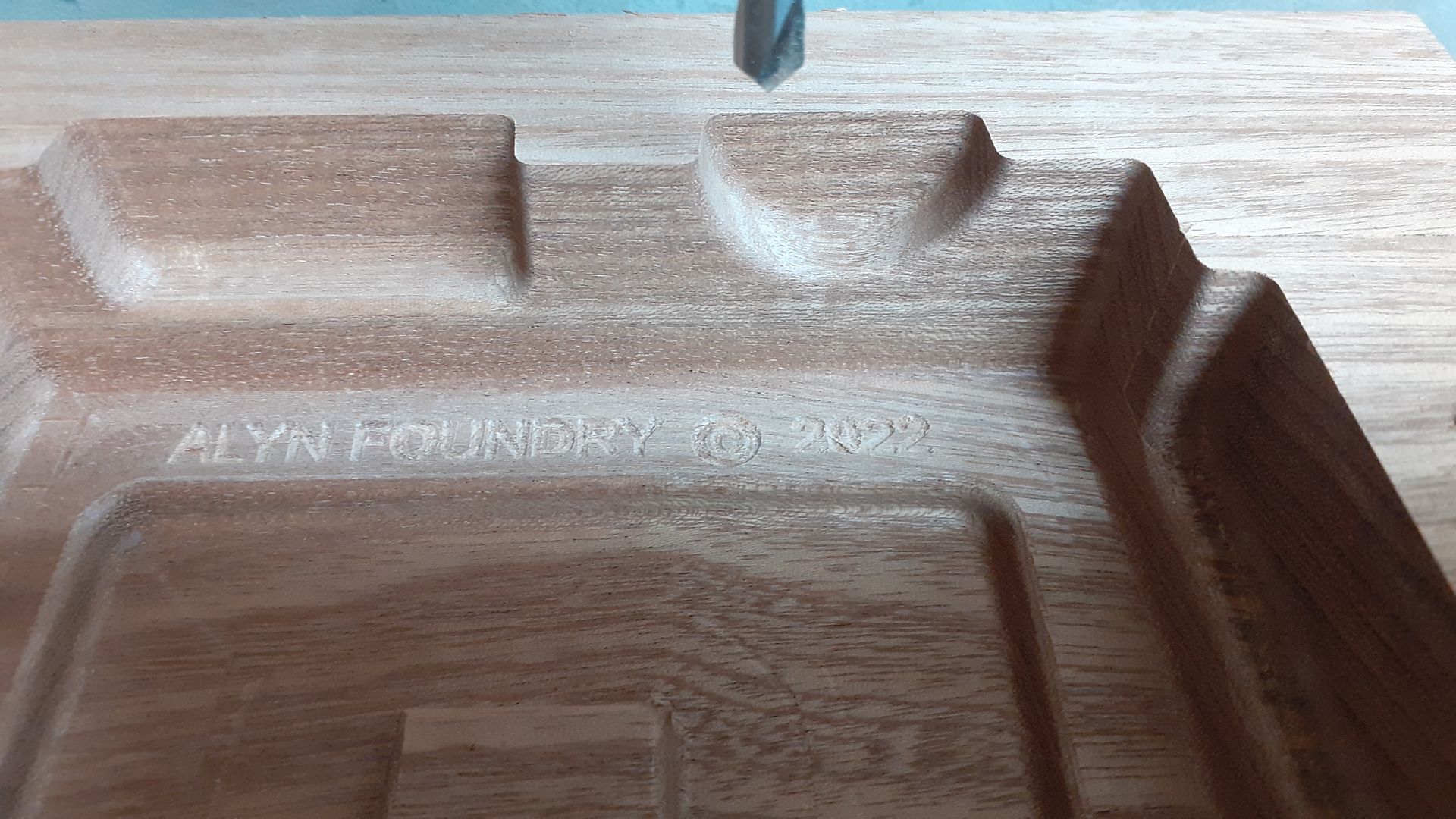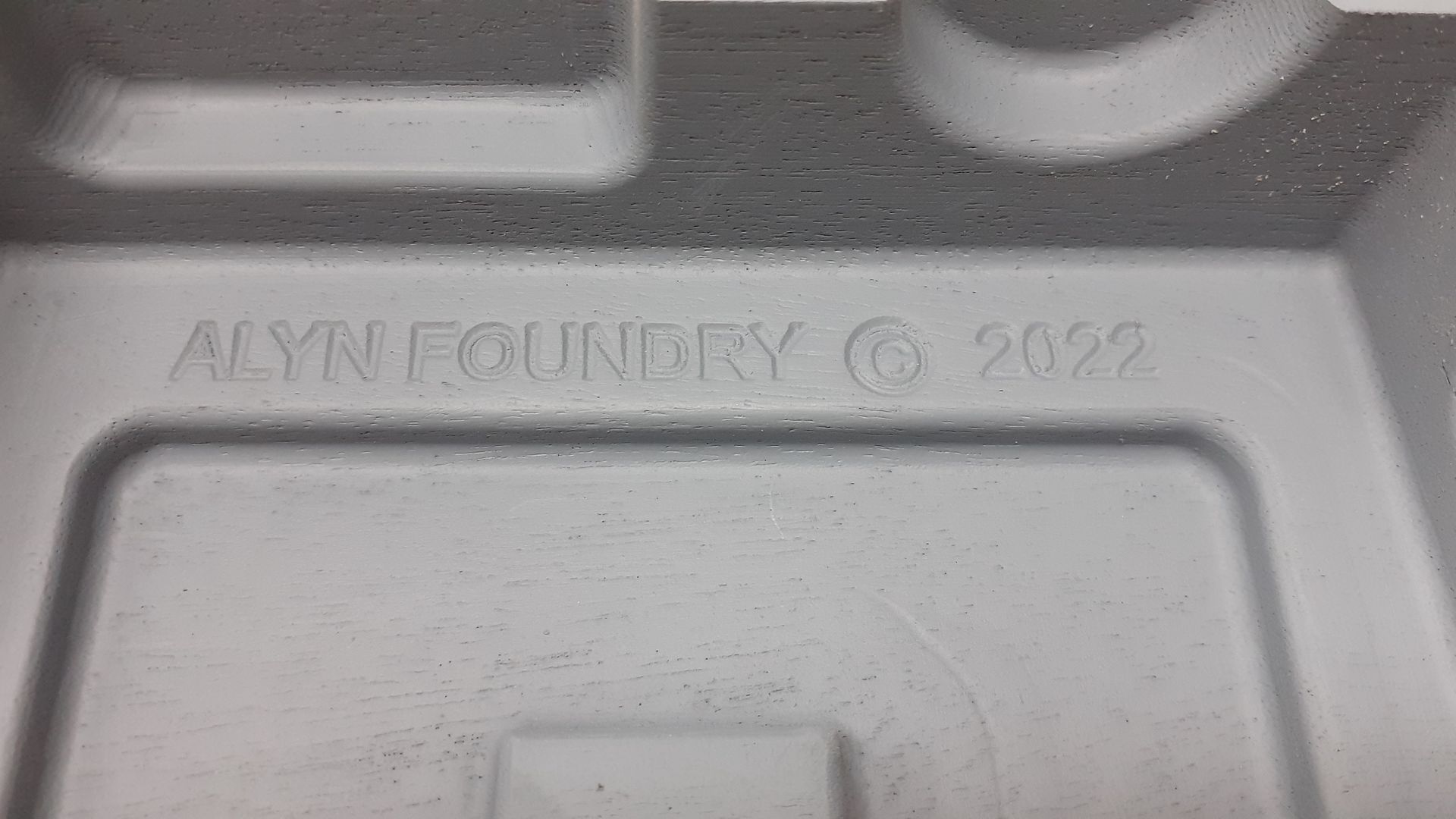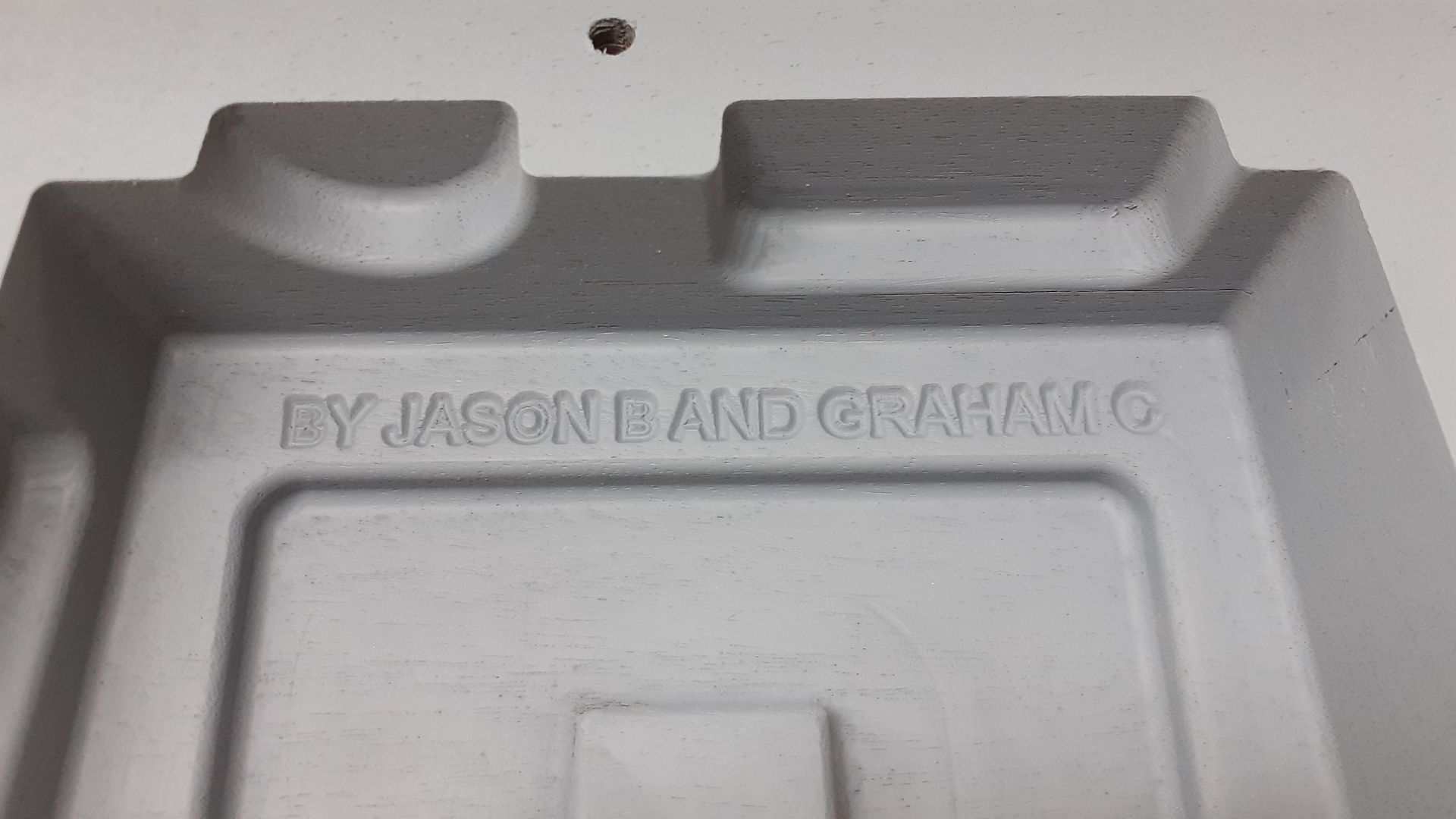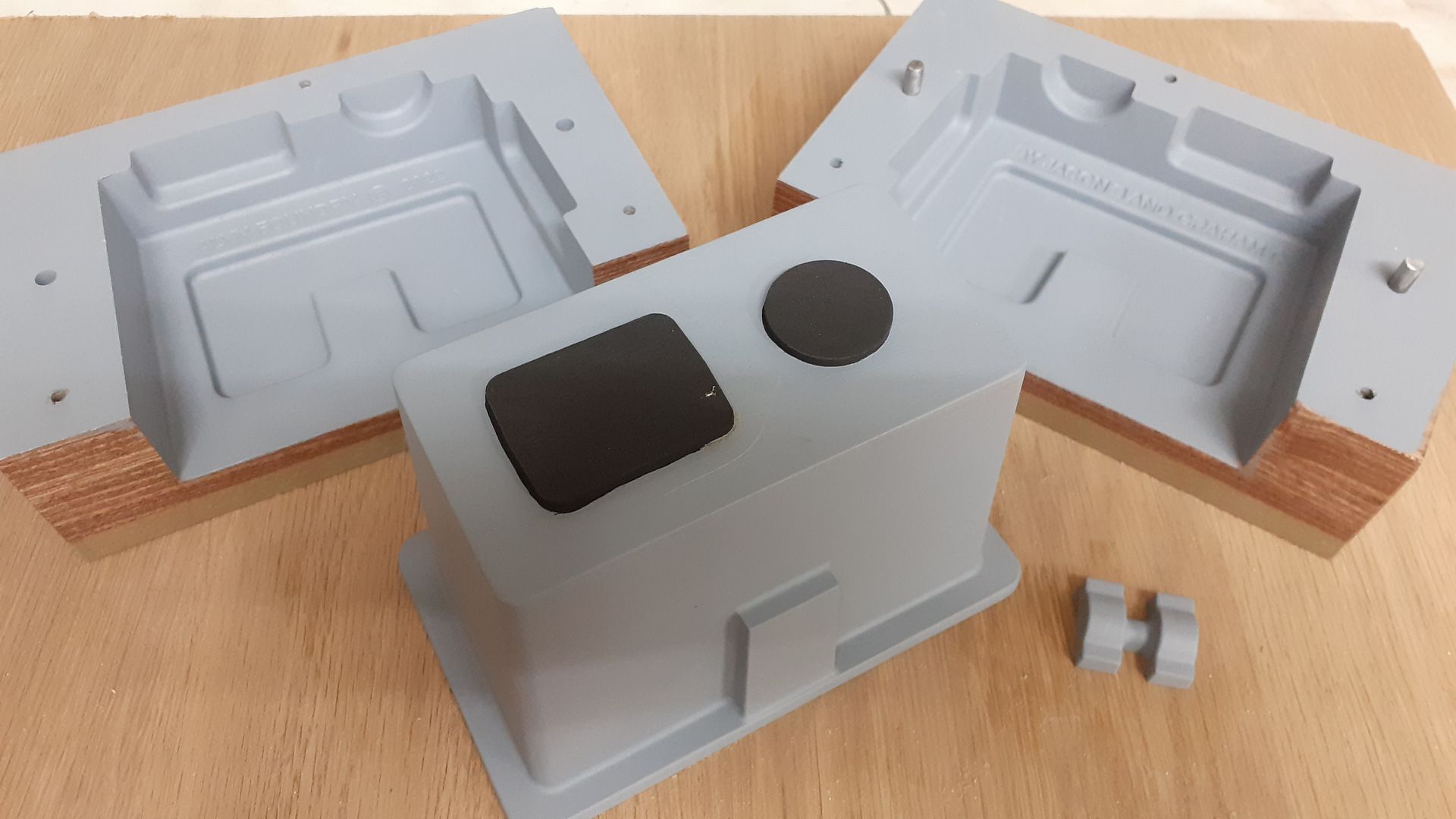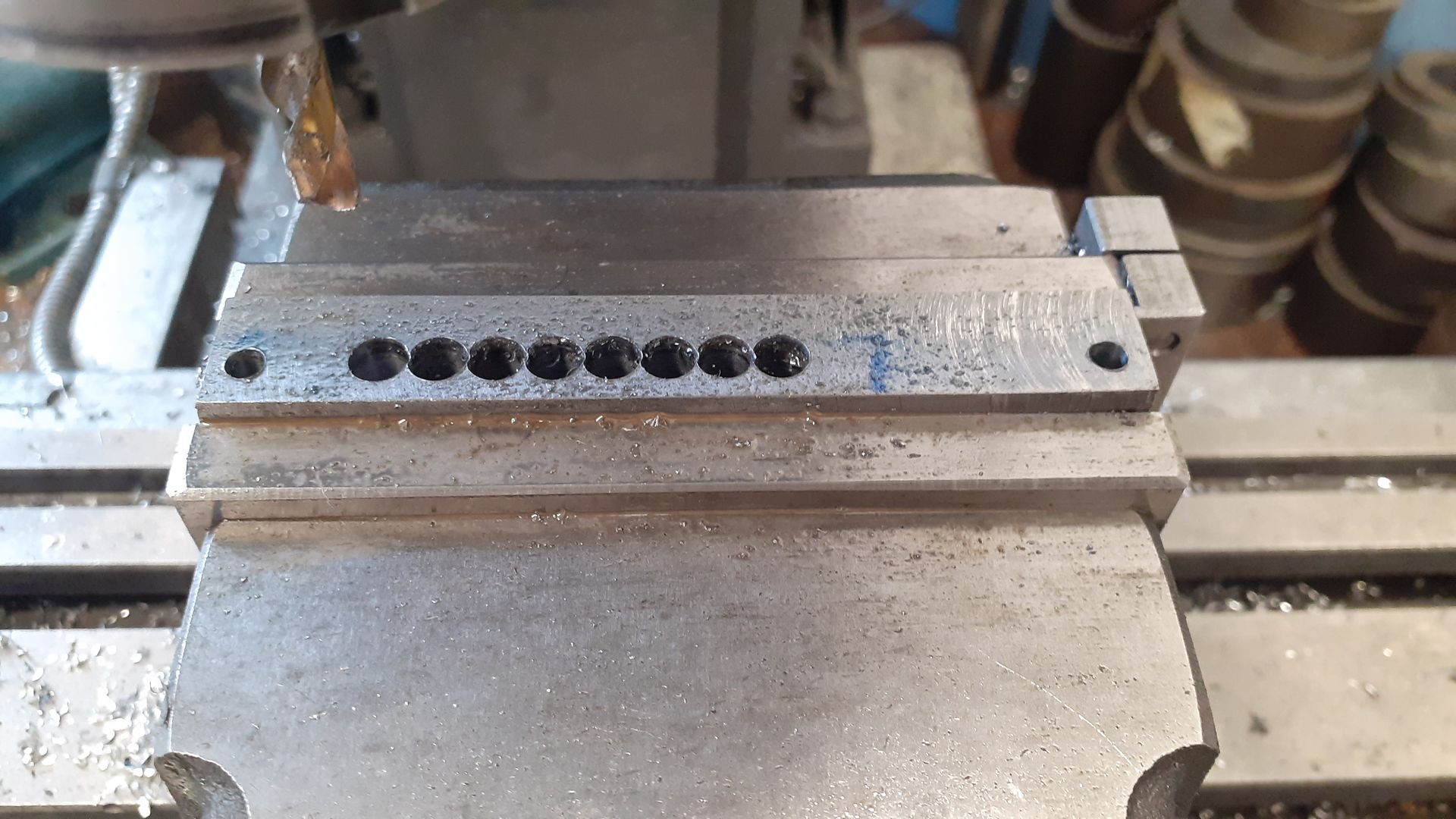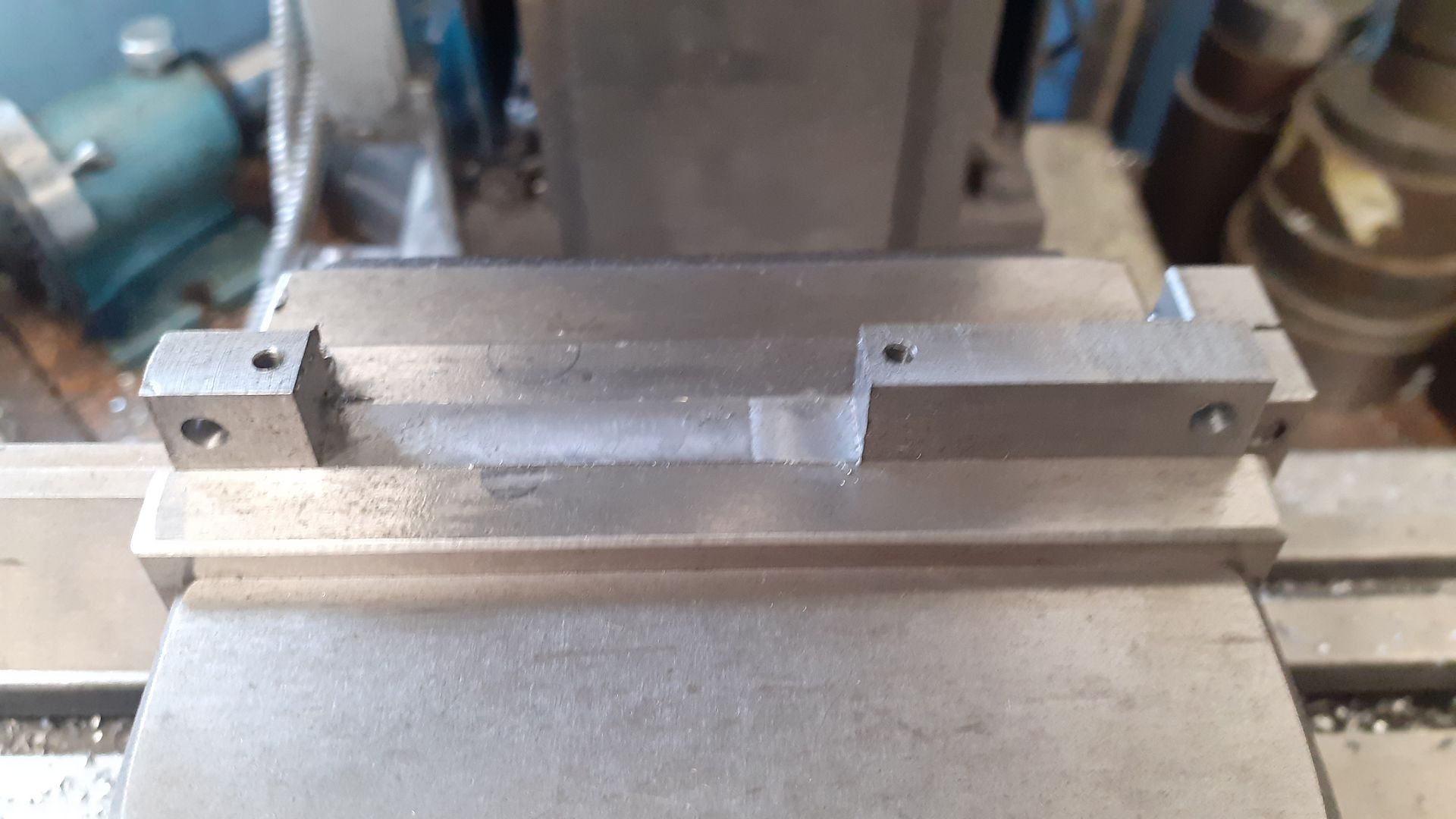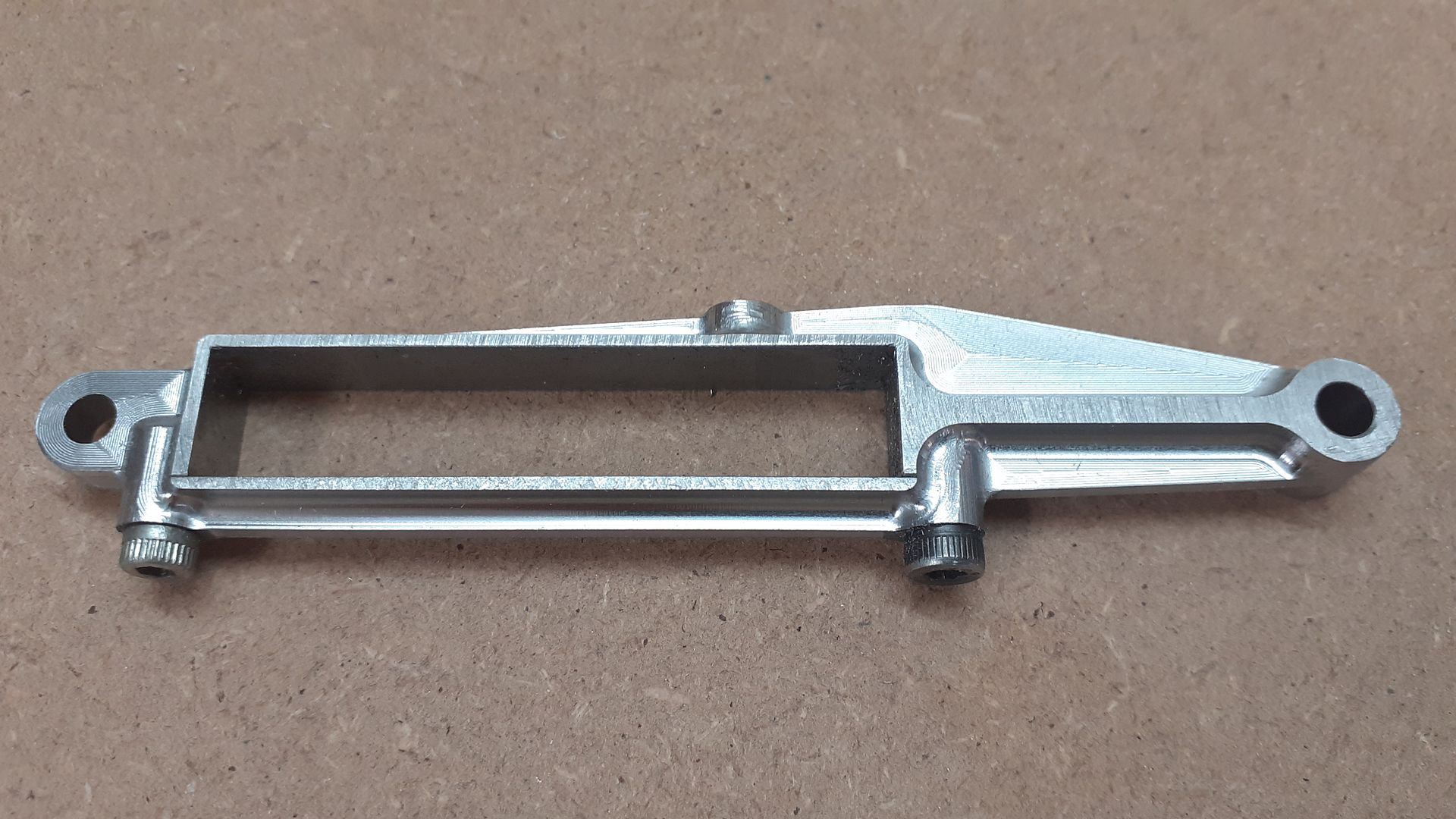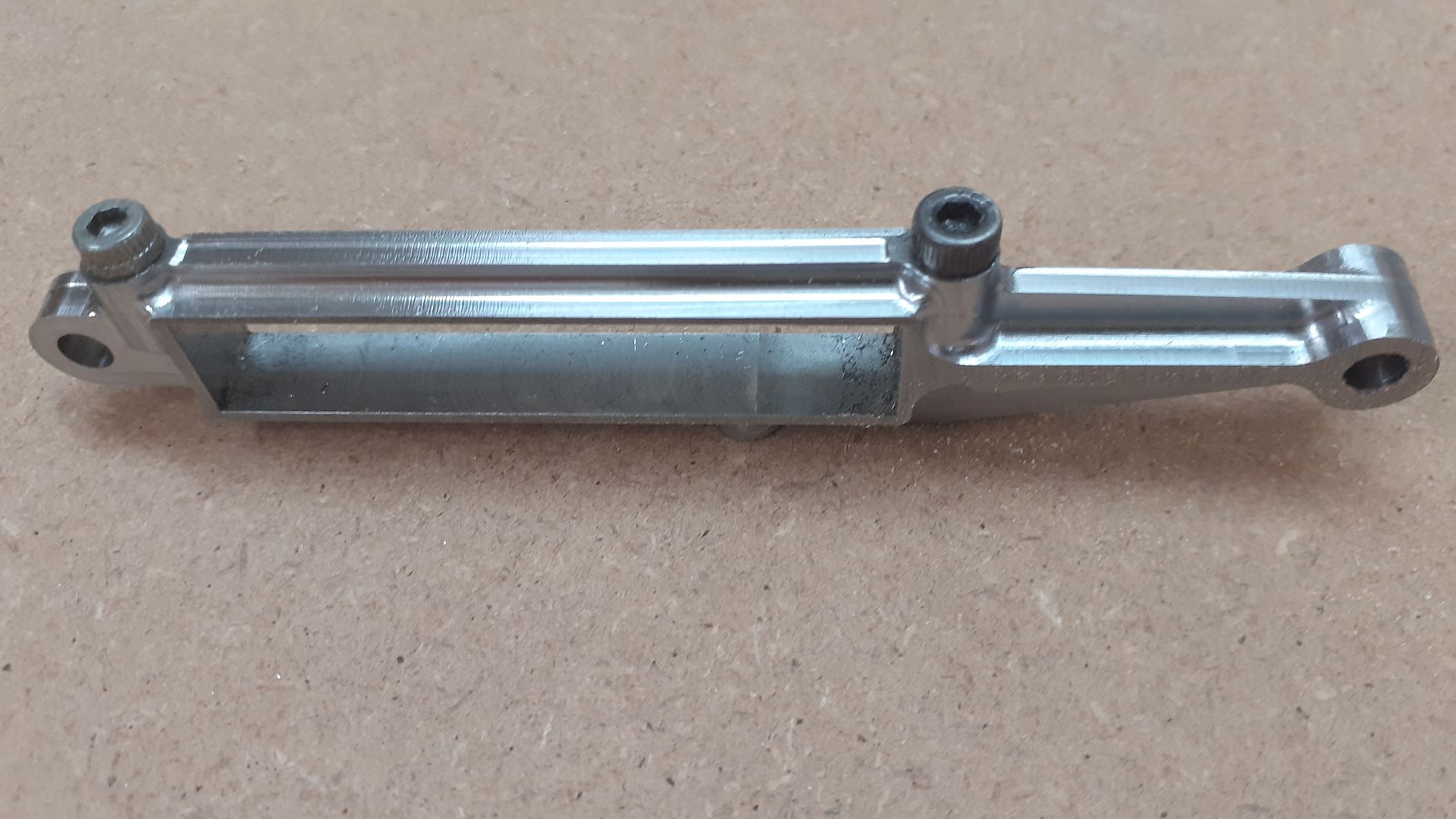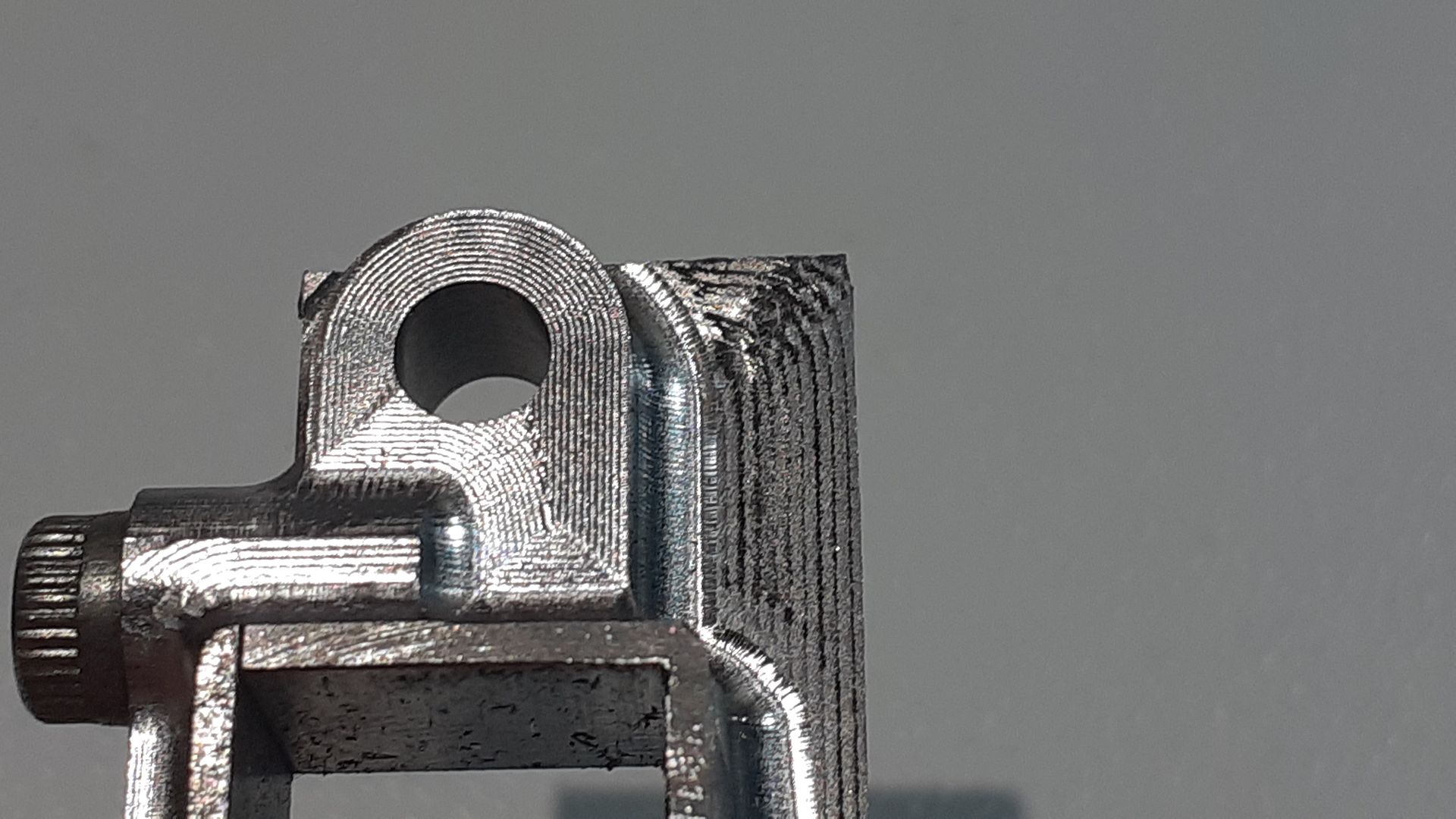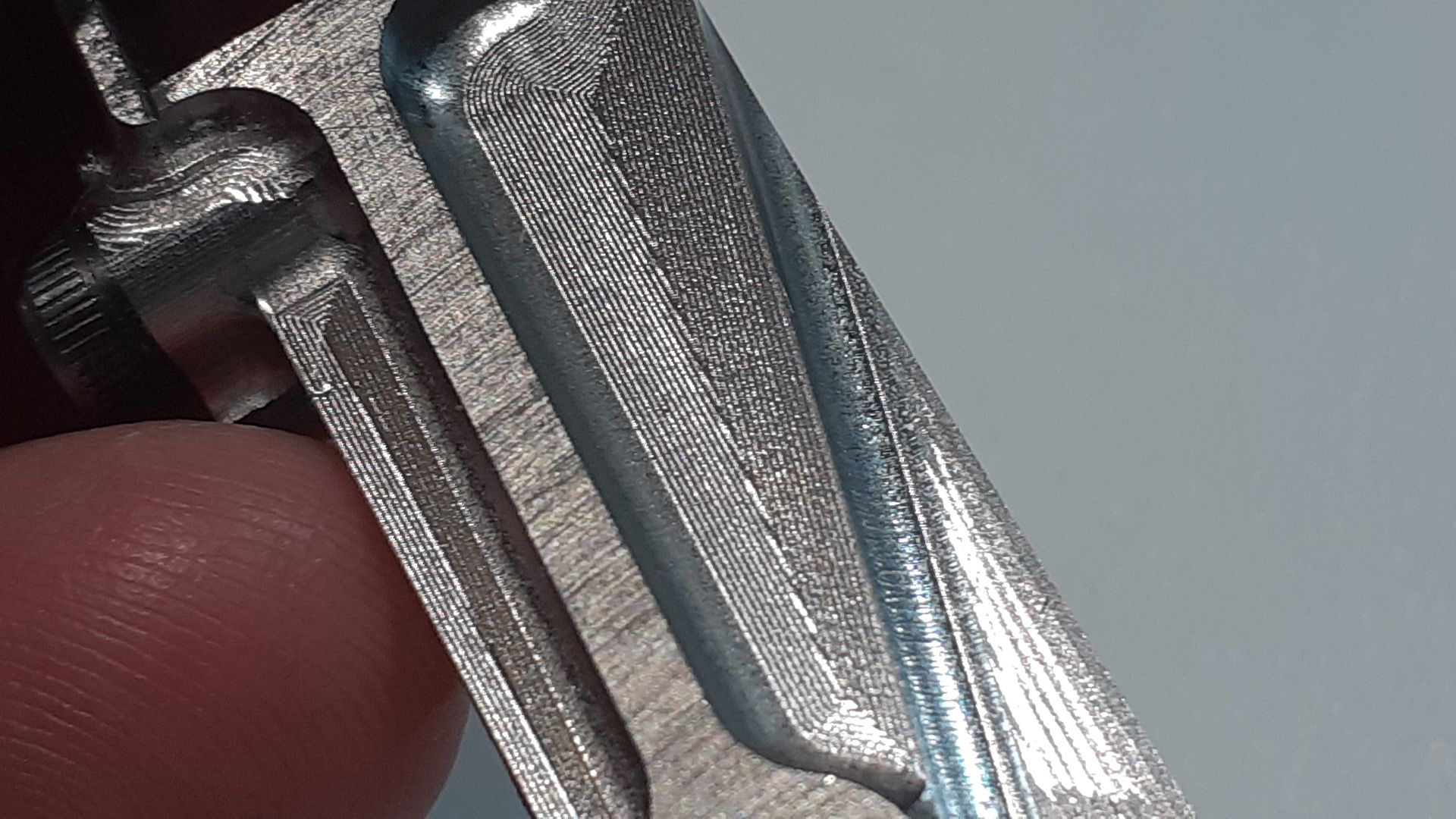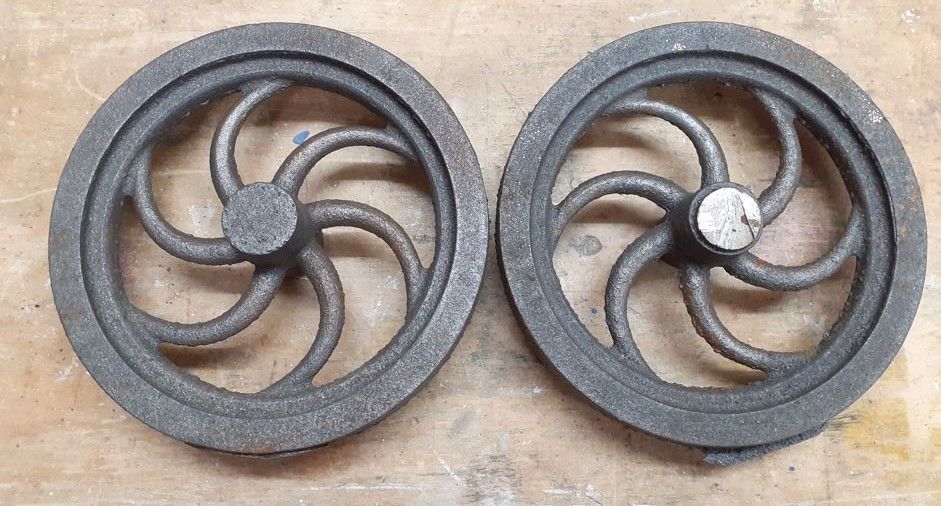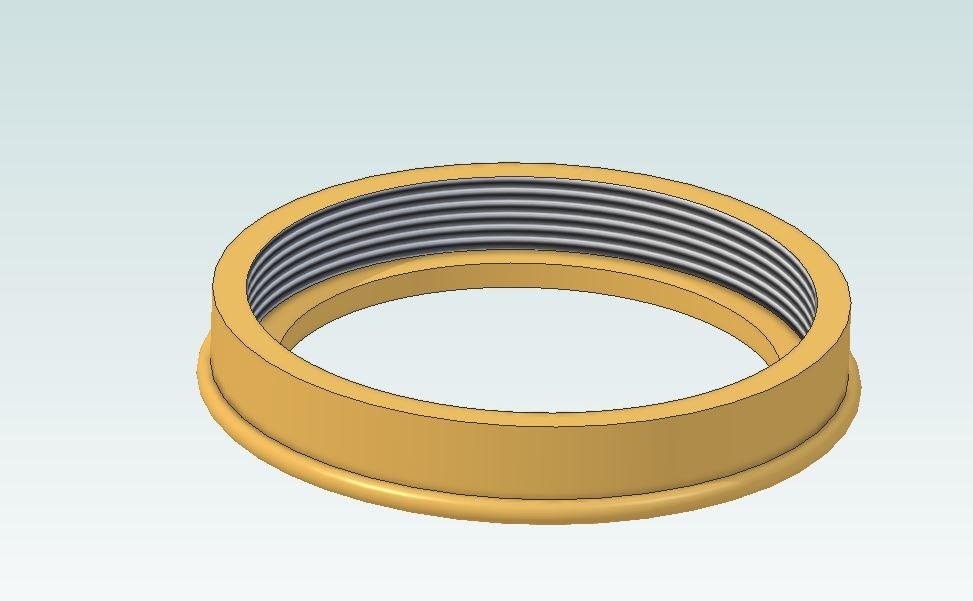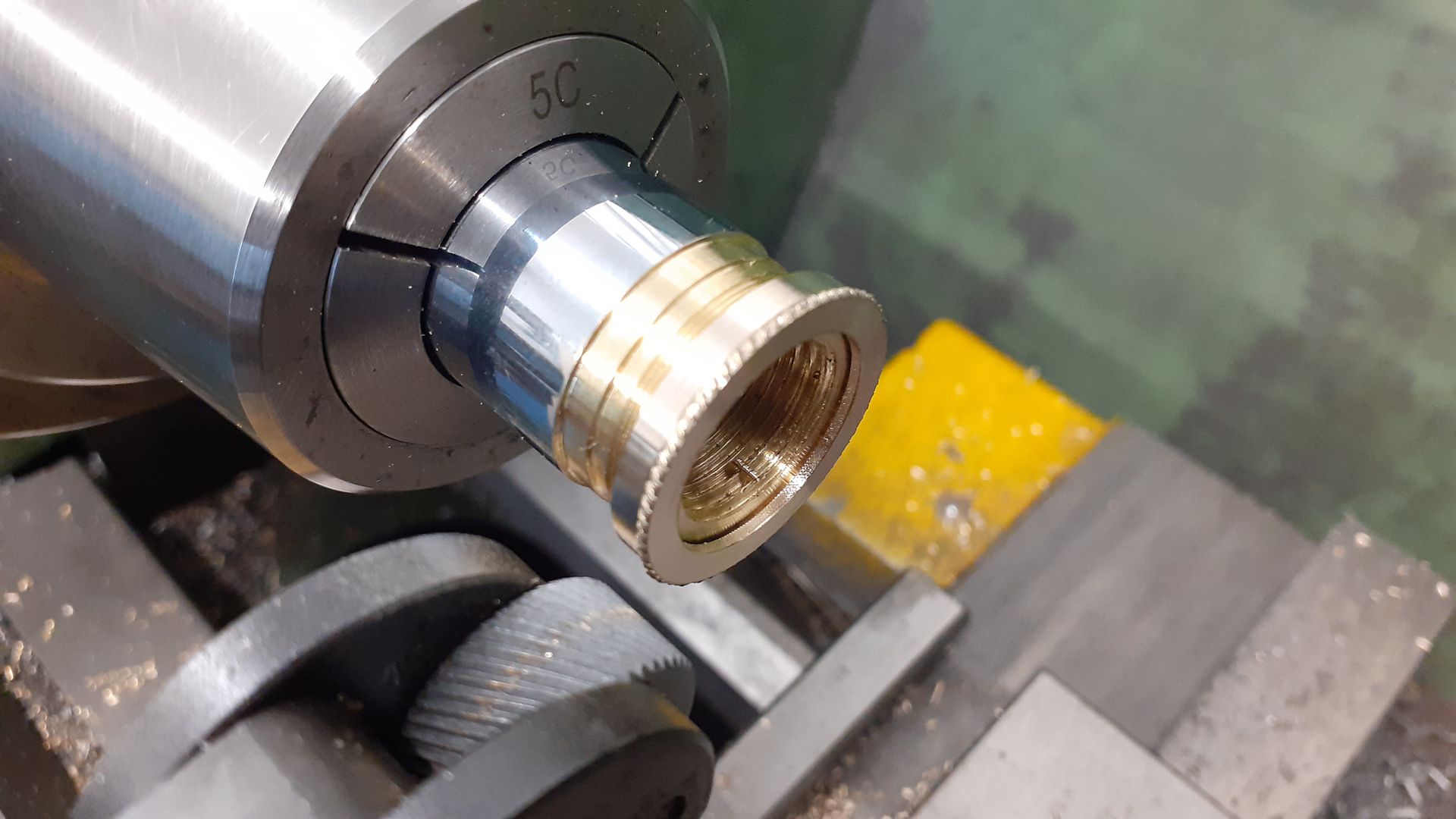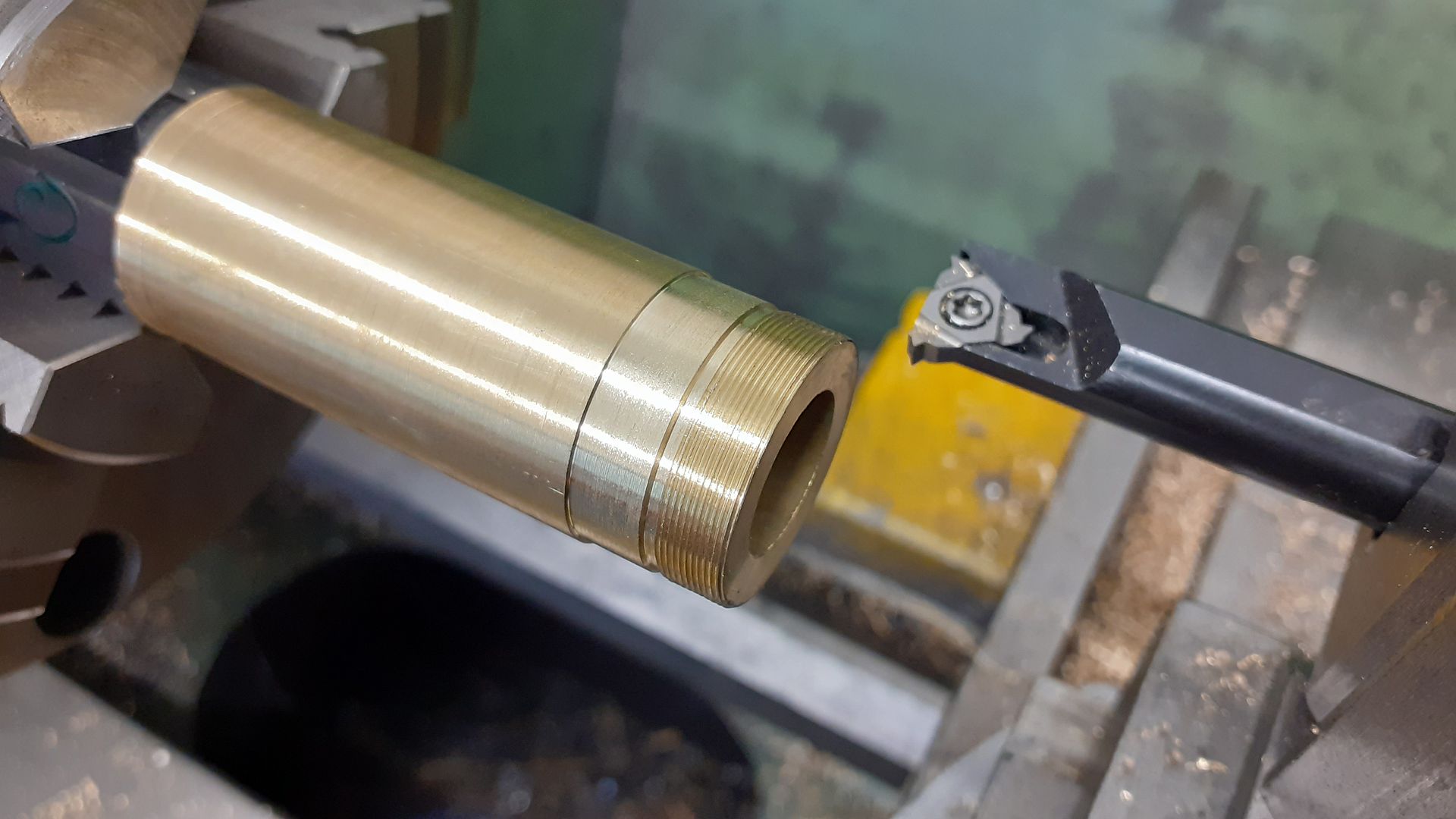The little Otto flame sucker that I'm working on has a form of scotch yoke that is pivoted at one end and connects to the conrod big end at the other. I had sent Graham Corry a basic sketch of this with the critical sizes from which he made a pattern and had some cast in brass with the intention to have the crank run against the brass slot. Having subsequently seem images of Tom's larger size replica I decided to go down that route which has split bearings for the crankshaft and to get them into place the bottom of the Yoke is a separate part.
I did a few alterations to my initial model while bearing in mind how I might machine the part and also ways to hold it and came up with this.

Wary that cutting a big notch out of the lower edge could make the steel go banana shaped I cut off a short length of 10mm x 100mm black hot rolled steel which should have less internal stresses than bright bar. After milling down to the required 8mm thick by taking 0.5mm cuts off alternate faces to keep the cuts balanced I drilled and reamed for the two 4mm holes and also stitch drilled out most of the waste material from the slot.

A couple of quick hacksaw cuts and the remaining waste dropped out so that the slot could be milled to the final 50mm x 10mm size and a pair of holes tapped M3 for the bottom plate retaining bolts.

Another piece of steel milled to 3mm x 8mm section with a couple of clearance holes completed the work on the manual machines.

The CNC is the best tool for the job on a part like this where there are curved features running into straight and angled ones so a session on Fusion 360 soon gave me a USB stick with all the tool paths needed, 5 per side which were:
1. Adaptive cut to remove most of the waste using a 4mm dia 4-flute R1 cutter at 5000rpm and 500mm/min feed
2. Ramp cut to finish the vertical and curved surfaces using a 3mm dia 4-flute carbide ball nose cutter at the same speeds and feeds. This was also used for the remaining cuts
3. Horizontal cut to finish the face of the webs and the "D" shaped big end boss
4. Scallop cut to refine the near horizontal parts of the three round bosses
5. Pencil cut which refined the internal fillets particularly where the three bosses meet the main body.
With the KX3 fired up the first thing to do was drill and ream for two location pegs in a bit of scrap aluminium which would locate in the two hole sin the yoke. I also tapped a couple of M3 holes to take screws to clamp down a top hat section clamping block.

It was then just a case of clicking "GO" and then getting on with something else, just popping back to change the tool and start the next tool path. Also just had to turn the yoke over half way through so the opposite side could be machined.

quite pleased with how it turned out. There is one small flaw in the steel that you may just ne able to see about mid way along the top flange between the oiler boss and big end boss. I could hear it as the tool passed but not really see what was causing the change in tone until the part was out of the machine as it was towards the rear when being cut.



Finally a couple of close ups of the tool marks left by the ball nose cutter as it stepped over 0.2mm between each pass of the horizontal path, they are more visual that physical as I can only just about feel them with a finger nail but as this was probably a casting or possibly a forging it will be fine after final fettling.


 JasonB.
JasonB.

